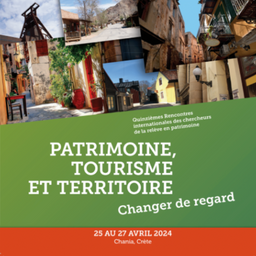City heritage in Southeast Asia: urban fabric and heritage actions under the aegis of UNESCO certification
My Session Status
The aim of our research is to examine the frictions and interactions between the processes of heritage designation and urban development in Southeast Asian cities. We aim to examine the extent to which the definition of a heritage area influences, or even produces, the transformations at work within the listed area and the associated contemporary city.
This research work compares two territories affected by particular heritage claims, in order to question a potential upheaval of urban dynamics: Luang Prabang in Laos, inscribed on the UNESCO World Heritage List since 1995, and Chiang Mai in Thailand, on the Tentative List since 2015.
Based on the observation of the creation of a post-inscription dissociation between a space considered as “heritage” and a space designated by opposition as “non-heritage,” we hypothesize the creation of an interface between these two fields, an interstitial space that welcome the emergence of processes revealing the imbrications between two types of territorial conceptions often considered as antagonistic.
This contribution to the 15th Rencontres Internationales proposes to examine two axes from the point of view of two case studies contextualized within research:
1) Labelling and recognition: between alternative patrimonialization and appropriation, how are labels and heritage recognition received by local citizen communities?
The inclusion of the historic city of Luang Prabang on the UNESCO World Heritage List in 1995 triggered rapid urban development as international tourism intensified. Since the early 2000s, mountain populations have settled on the outskirts of the city to benefit from the economic windfall. In particular, Hmong women from the surrounding villages spontaneously set up a craft market within the listed area, which was quickly assimilated into heritage policies as a representative element of a specific intangible heritage. In what way do the evolutions of the ethnic market reveal the shift from a heritage project to a local project, and in what way do they reflect the internal evolutions of UNESCO’s heritage conceptions?
2) The stakes and effects of the rediscovery of certain areas hitherto largely untouched by tourism: rural areas, fringe areas, urban districts.
In Chiang Mai, the very development of the project has already led to real transformations in the area. Since the 1960s, the banks of the Mae Kha Canal, being undevelopable flood zones, have been home to poor, marginalized populations. This neglected backwater of the city, considered an open sewer, is nevertheless designated on the inventory of the nomination file as a heritage attribute of the city, and has thus been the subject of a project to enhance and restructure the banks in 2021. In what way does this project reveal the construction of a heritage discourse at the service of the city’s economic and tourism development?

Discussion